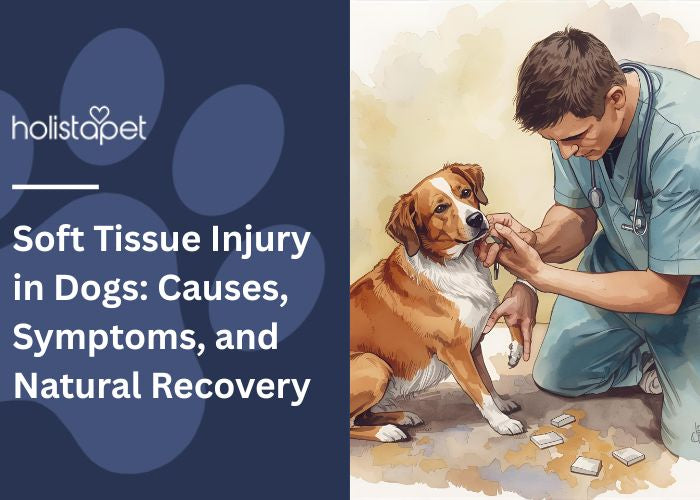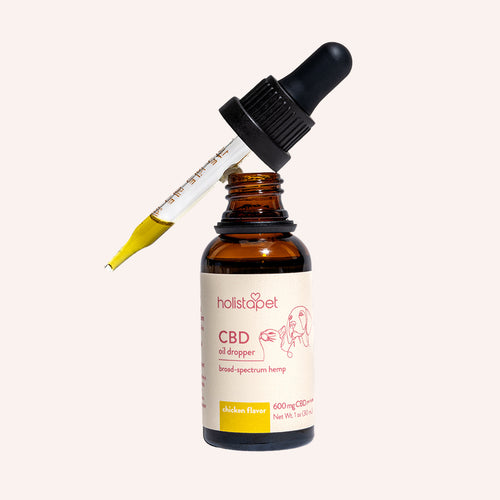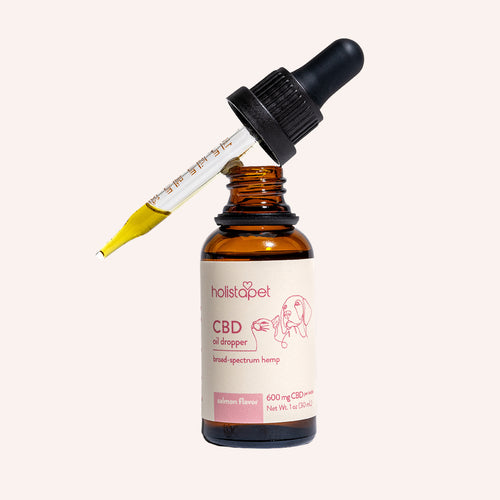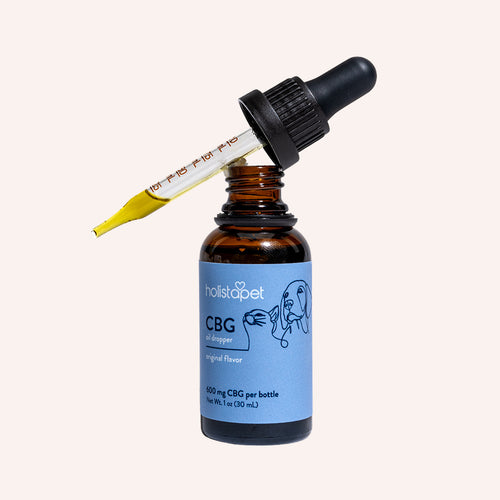A soft tissue injury in dogs can sideline even the most energetic tail-wagger. One minute, they're leaping for a ball; the next, they're limping toward the couch with a look that says, "Something's not right." These injuries affect the muscles, tendons, or ligaments—the hidden heroes behind every sprint and stretch.
When those soft tissues take a hit, your pup may show stiffness, puffiness, or trouble using the affected leg. Their usual excitement for walks or playtime fades fast. The path to rehabilitation often starts with rest, comfort, and gentle reassurance. With time and a watchful eye, that spark in their step can return right where it belongs.
What Is a Soft Tissue Injury in Dogs?

A soft tissue injury occurs when the muscles, tendons, or ligaments take more strain than they can handle. These tissues act like the body's built-in support system, giving dogs the power to sprint, leap, and twist with ease. When something pushes those limits, like a slip, jump, or awkward landing, the tissue fibers stretch or tear, and discomfort follows fast.
Soft tissue trauma ranges from minor injuries like mild strains to major injuries like serious tears that slow movement. The affected body part might feel tender, warm, or slightly swollen, and your dog could limp or favor one leg. While these injuries sound scary, most dogs respond well to rest, gentle care, and guidance from a veterinarian who understands canine mobility, particularly canine sports medicine.
Common Types of Soft Tissue Injuries
Some soft tissue problems happen suddenly during play, while others build up over time. Knowing what type of injury your dog may have helps you spot the signs early and support faster treatment. Common types include:
- Muscle Strain. An extension or small tear in the fibers, often caused by running too hard or slipping.
- Ligament Sprain. When a ligament extends beyond its limit, leading to soreness and swelling near a joint.
- Tendon Injury. Overuse or sudden force can irritate the tendons that attach muscles to bones.
- Contusion (Bruise). Direct impact that causes tenderness and puffiness.
- Cranial Cruciate Ligament Tear (CrCL Rupture). A more serious knee injury that can lead to lameness or instability in the leg.
What Causes Soft Tissue Injuries in Dogs?

Soft tissue trauma often strikes when there's sudden stress or repeated strain, or with wear that comes with age. Some dogs bounce back quickly, while others need extra care and time to heal. Understanding what triggers these injuries can help you protect your dog's mobility for the long haul. Main causes include:
- Overexertion and Exercise-Related Strain
- Slips, Falls, and Sudden Movements
- Age and Breed-Related Susceptibility
Overexertion and Exercise-Related Strain
Dogs with big hearts and endless energy often push their bodies past their limits. A long hike, a high jump, or even one too many laps around the yard can strain the soft tissues that power every leap and sprint. Muscles, ligaments, and tendons work together to keep movement smooth, but too much repetition or sudden exertion can push them beyond comfort.
This kind of strain tends to show up as limping, stiffness, or clear reluctance to move. Agility competitors and large-breed dogs are more prone to this issue, especially when their workouts skip proper warmups or rest breaks. Exercise is great, but balance is equally important. Strong muscles thrive on both activity and downtime.
Slips, Falls, and Sudden Movements
One misstep on a wet floor or an awkward landing from the couch can lead to soft tissue trauma. Quick twists or tumbles can pull or tear the delicate fibers that connect muscles and ligaments. Even a routine game of fetch can take a wrong turn if your dog loses footing mid-chase.
These moments often leave the injured area tender or swollen. Your pup might yelp, limp, or hesitate to put weight on one leg. While the incident may seem small, the soreness can linger if not managed early. Simple precautions, like slip-free floors and careful supervision during play, help keep those sudden surprises from turning into painful setbacks.
Age and Breed-Related Susceptibility
As dogs grow older, they naturally lose some of their flexibility. This makes soft tissue trauma more likely, even during light activity. Large-breed dogs and athletic types are more susceptible due to their weight, energy, and frequent bursts of movement. Over time, their joints and tissues take on extra strain that can lead to recurring soreness or limited mobility.
Senior pets, on the other hand, might develop arthritis, stiffness from slower healing, and reduced muscle tone. Everyday actions like climbing stairs or jumping onto the couch can suddenly cause aches. Paying attention to subtle changes, like hesitation before running or a stiff walk after rest, can help you catch small problems before they grow.
Signs and Symptoms To Watch For
Soft tissue injuries can look different depending on the severity, but the clues are usually easy to spot once you know what to watch for. Early detection helps your dog heal faster and keeps minor issues from turning into major setbacks. Most pets show physical or behavioral signs that tell you something doesn't feel right. They include:
- Limping or Favoring One Leg. Dogs often shift their weight to avoid soreness, making one leg seem weak or unused.
- Swelling, Tenderness, and Warmth. The affected part may appear puffy or feel slightly warmer than usual.
- Stiffness or Reluctance to Move. Movements like running or jumping might cause aches, leading to hesitation during walks or play.
- Behavioral Changes and Restlessness. A usually calm pet may pace, whine, or struggle to find a comfortable resting position.
How Veterinarians Diagnose Soft Tissue Injuries

When a dog shows signs of soreness or limping, a veterinarian starts with a hands-on physical exam. They gently feel along the legs, for example, to find tender or swollen spots. This helps identify the affected limb and rule out bone or joint problems.
Next, imaging tools like X-rays or ultrasounds help confirm the animal patient's diagnosis. While X-rays reveal bone issues, ultrasound can show muscle or tendon damage that isn't visible otherwise. In more complex cases, an MRI gives a clearer view of deeper tissues.
By combining touch, observation, and imaging, veterinarians can pinpoint the injury's severity. They can then recommend the right medication and treatment plan.
Safe Home Care and Recovery Tips
Helping your dog recover from soft tissue trauma starts with calm, steady care. Healing takes time, and the goal is to reduce soreness while preventing further strain. Small steps make the biggest difference, especially in the early days when rest is key. Try the following techniques:
- Rest and Restricted Movement. Limit running and jumping. Short leash walks for bathroom breaks only.
- Using Cold Compresses for Swelling. Apply a cold pack wrapped in a towel for 10–15 minutes to ease puffiness.
- Switching to Warm Compresses After 48 Hours. Gentle warmth encourages blood flow and loosens stiffness.
- Supportive Bedding and a Calm Environment. A soft cushion and quiet space help your pet relax and rest without stress.
Natural and Holistic Remedies for Healing
Natural approaches can support comfort when your dog faces an injury. Gentle methods help calm the body while encouraging steady healing. Many pet parents turn to holistic options to complement veterinarian care and promote long-term mobility.
For example, massage, stretching, and physical therapy are helpful ways to relax tight muscles and improve circulation. Herbal balms and warm compresses can also help ease soreness in sensitive areas.
Among natural options, CBD (cannabidiol) stands out for its ability to soothe aches and reduce swelling. With the right balance of rest, gentle care, and natural wellness support, your pup can bounce back without losing comfort.
The Role of CBD in Soreness and Swelling
CBD helps by calming soreness and easing puffiness in the affected area. It interacts with your dog's natural systems to bring comfort without harsh side effects. When soft tissues get strained, CBD helps promote relaxation and relief, so your buddy can rest easier.
Many dog owners use CBD alongside physical therapy to boost comfort and speed up healing. It's a gentle, plant-based option that can help with stiffness, mobility, and overall mood. Regular doses allow your dog's body to respond gradually, helping them feel more comfortable while on the mend.
How HolistaPet CBD for Dogs Can Help
HolistaPet's CBD for dogs blends natural care with reliable science to support recovery from soft tissue trauma. Every product—whether oil, calming chew, or mobility treat—is carefully crafted with all-natural ingredients and zero artificial additives. Our formula contains no THC, so your pup stays calm and comfortable without any unwanted effects.
Each CBD oil is proudly made in the USA from top-shelf, American-grown hemp and tested by third-party labs for purity and potency. The dropper bottles make dosing simple, and the various potencies allow pet parents to choose what fits their dog's size and needs.
HolistaPet also gives back: $1 from every sale helps rescue pets in need, guided by Dr. Kwane Stewart, 2023 CNN Hero of the Year and HolistaPet Chief Veterinary Officer. Explore the collection here.
Preventing Future Soft Tissue Injuries

Once your dog recovers, prevention becomes the best kind of protection. Keeping muscles, joints, and ligaments strong helps avoid future setbacks and keeps your pet active longer. A few mindful habits can make a big difference in their daily routine:
- Gradual Exercise and Warm-Up Routines. Start with gentle extensions or slow walks before playtime to prepare for activity.
- Joint Support Treats and Supplements. Give your dog wellness treats that contain ingredients like glucosamine or omega fatty acids for mobility support.
- Safe Play and Controlled Movement. Use non-slip mats indoors, avoid rough terrain, and supervise outdoor activities to prevent slips and falls.
When To Contact Your Veterinarian
Sometimes, even with the best care, a dog's injury needs a professional's touch. Contact your veterinarian if your dog continues limping after a few days or if the puffiness and soreness don't improve. Difficulty standing, climbing stairs, or rising from rest can also signal a deeper issue that requires attention.
Watch for signs like restlessness, whining, or visible aches during movement. These can indicate lingering tissue strain or another problem that needs proper treatment. Your vet can assess the severity, suggest imaging if needed, and guide you toward a recovery plan tailored to your pet's needs. Early action helps prevent future problems and keeps healing on track.
Closing Thoughts: Supporting Your Dog's Long-Term Mobility and Wellness
Caring for a dog recovering from soft tissue trauma means looking beyond today's limp. Consistent attention, gentle activity, and the right support build lasting strength. Over time, these small habits keep joints flexible and prevent new soreness from creeping in.
HolistaPet stands by pet parents who believe in natural healing. With expert guidance and high-quality CBD options, our products help maintain mobility and comfort for dogs of every size. Staying proactive with rest, regular exercise, and thoughtful care keeps spirits high—because wellness should feel as good as it looks.


 CBD Oil for Dogs - Fast Acting
CBD Oil for Dogs - Fast Acting
 Chicken Flavored CBD Oil For Dogs - Easy Dose
Chicken Flavored CBD Oil For Dogs - Easy Dose
 Salmon Flavored CBD Oil For Dogs - Highly Rated
Salmon Flavored CBD Oil For Dogs - Highly Rated
 CBG Oil for Dogs and Cats - Loved by Thousands
CBG Oil for Dogs and Cats - Loved by Thousands





Leave a comment
All comments are moderated before being published.
This site is protected by hCaptcha and the hCaptcha Privacy Policy and Terms of Service apply.